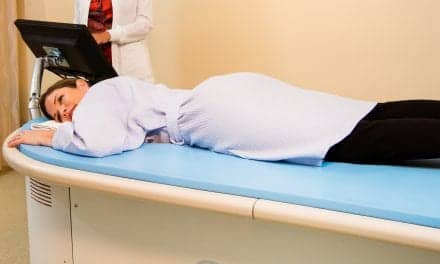 |
Oncology Alliance is a private practice of 29 board-certified medical and radiation oncologists providing cancer care along the eastern edge of Wisconsin. More recently, we opened a fully integrated freestanding cancer center, the Mayfair Oncology Center, with on-site PET-CT.
The Mayfair Oncology Center strictly caters to the cancer patient, providing for all their diagnostic and treatment needs in a single, convenient location. In an age of perpetually larger and less personalized health care, this cancer center offers individual physician, nursing, dietary, social service, neuropsychiatric, and physical therapy support combined with the cutting edge imaging technology, including a CT/PET scanner and a wide-bore CT simulator.
The CT/PET unit has been an invaluable tool for us. When initially installed, the scanner was one of eight such units in the world and one of four in this country. This scanner not only focuses on structural changes seen in cancer patients with CT imaging, but also allows the physicians to evaluate for metabolic and physiologic changes associated with cancer. The PET imager scans for labeled, injected sugar to identify tumors, which have a faster metabolism than the surrounding normal tissue. By utilizing this technology, we have been able to identify disease earlier, stage it more accurately, and better assess the patient’s response to therapy. As oncologists, we have utilized the unit strictly for our oncologic needs. It has been used to initially evaluate and later assess the response to therapy in patients with non-small cell lung cancer, colorectal cancer, melanoma, lymphoma, head and neck cancer excluding CNS and thyroid malignancies, esophageal cancer, and, on occasion, breast cancer. Considering the data suggesting benefit in numerous other malignancies, we suspect the indications for usage will be expanded in the future.
In addition to the diagnostic use of PET, we anticipate utilizing the unit in the near future for direct CT/PET radiation planning. I believe this will be one of the most significant changes in recent years in how we design the radiation therapy fields for cancer therapy. By utilizing both anatomic CT information as well as metabolic PET data in the treatment position, we will be able to more accurately localize our fields. Currently, larger margins are designed around gross disease due to the uncertainty of microscopic disease as well as organ and patient motion. By reducing therapy volumes, the acute and long-term toxicities of treatment may be minimized. Additionally, it may be possible to dose escalate in certain therapy situations, which may result in better local control of gross disease.
The facility also has a wide-bore CT scanner. This scanner has a wider opening than virtually all other CT scanners. This has a number of benefits. Patients who are too large to fit through the confining opening of a conventional CT scanner can still undergo CT imaging. We have had few issues with claustrophobia. Lastly, the wider bore allows us more flexibility in patient set-up during the radiation planning process.
There are numerous benefits to specialty-specific outpatient centers, and we have found this model works well for us. The care is truly seamless, providing for most of the needs of our cancer patients. Patients appreciate having their medical and radiation oncology needs, most of their diagnostic imaging, ancillary social services, physical therapy, and dietary and counseling issues all provided at one convenient location with accessible parking.
To build a center of this magnitude, there has to be collaboration between numerous physicians and subspecialties. This project required input between medical oncology, radiation oncology, and radiology. There are both practical and financial benefits to an arrangement such as this for patients, physicians, and insurance payors. For patients, they receive all of their cancer care under one roof in an extremely efficient, customer service-driven facility. For physicians, the decisions on how to manage or implement new technology can be made and implemented quickly without the same degree of bureaucracy as is present in other institutions. For insurance payors, this is a cost-effective model of delivering state-of-the-art care in much the same way as outpatient surgery and imaging centers have proven cost-effective.
We have had a long-standing relationship with a large group of radiologists for a number of years. They operate several freestanding imaging centers as well as provide professional services at a number of hospitals in this community. They have expanded their practice by providing professional in-house reading of all diagnostic studies.
In summary, the world of medicine is constantly changing. New technologies such as CT/PET bring greater opportunities for both patients and physicians. If these novel technologies are to be implemented in an efficient, cost-effective way, we as physicians will need to remain intimately involved in how care is administered.
Perry Gould, MD, is a radiation oncologist with Oncology Alliance, a 26-physician practice based in Milwaukee.





